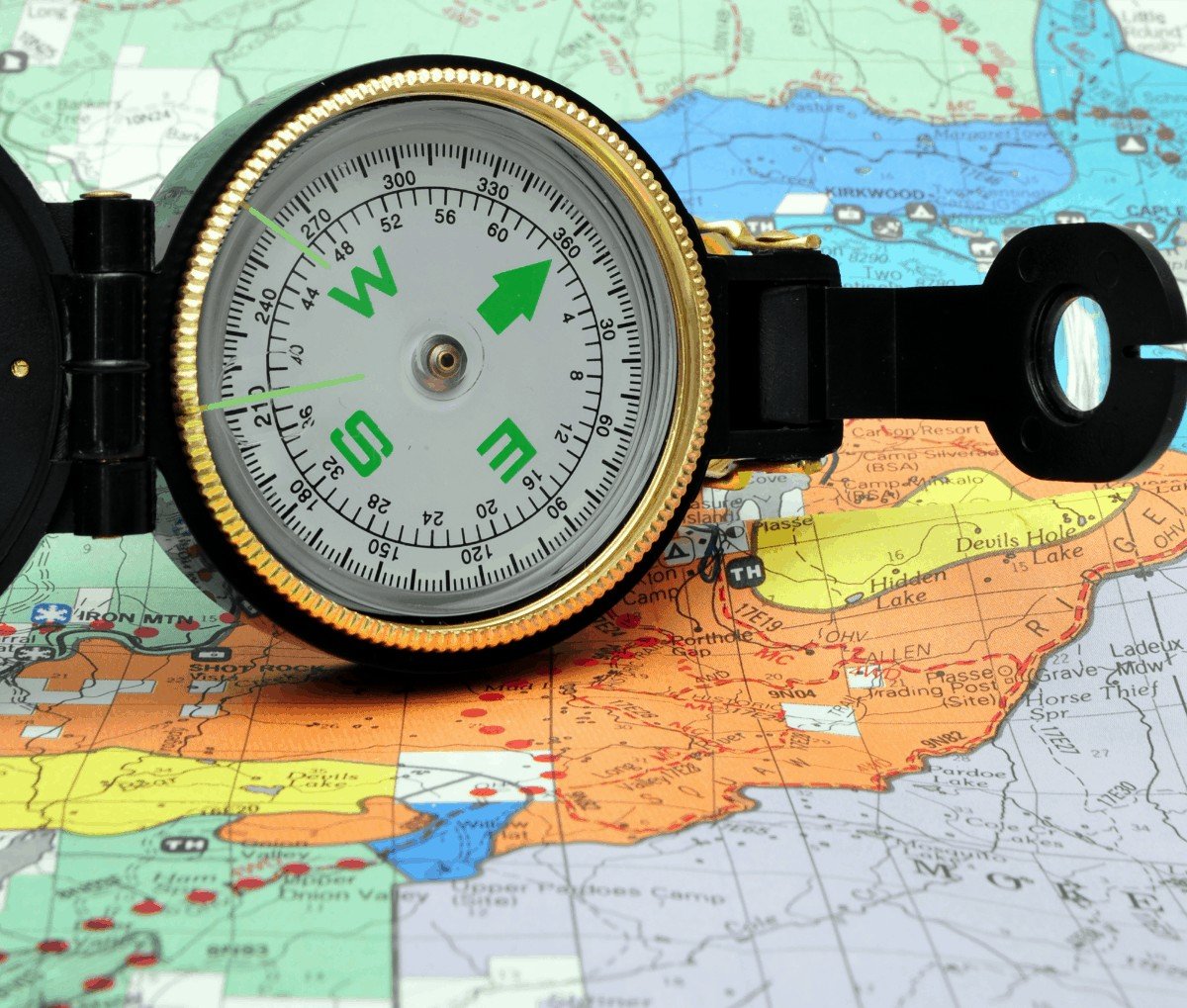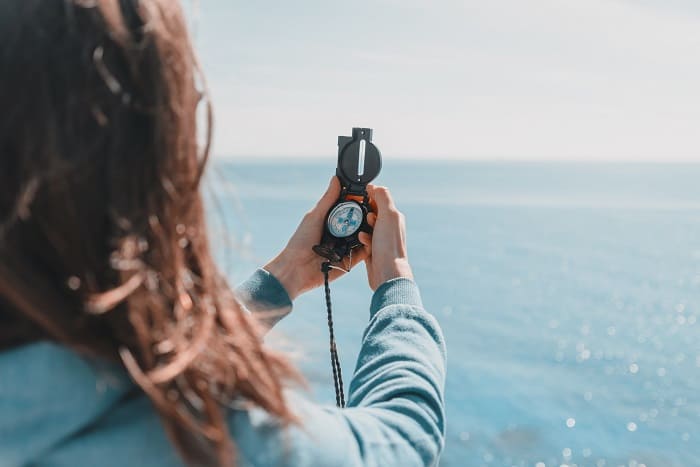Last Updated on June 12, 2022 by Ecorf
One of the many gears you need to take with you on a camping trip includes a compass. Now it doesn’t matter what type of compass you choose to settle for; you will need one to move around.
A lensatic compass is an important tool for finding your way around nature. While it can help you to navigate, one problem is it is difficult to read. It can seem a bit confusing with all the different markings and parts.
A compass is not at all difficult to read once you understand how it works. But before we get into how to read a lensatic compass, let us first get some things sorted out.
Table of Contents
What is a Lensatic Compass?
A lensatic compass works like every other compass they help you to navigate your way on planet earth. The lensatic compass features a magnetic pin whose function is to find the north pole. The only difference between it and other types of a compass is it uses a lens. It is easy to read the compass because of the magnifying lens.
The lensatic compass is also referred to as the military compass since it is used mostly by the US military.
The parts of a compass include the base, top cover, lens bracket, and the thumb loop. The base is the biggest part of the compass, there you will find the magnetic needle and 360-degree readings for moving around.
The cover houses the compass and helps to protect it. The lens bracket holds the lens and is foldable. The curved thumb loop provides stability for when you use the compass.
Now that you are familiar with the parts of a lensatic compass, the next step will be to note how the compass works.
How to Use a Lensatic Compass?
There are different ways to handle the compass, you have to try the different methods to find one that works well for you. Some of the popular methods of handling a compass include:
-
Two-hand Method
You can use the two-hand hold method to handle your compass. It is also referred to as the center hold and is relatively easy to perform. To use the compass, you will have to put your thumb through the thumb loop and then place your index finger beside the compass.
You will need to stabilize your hold on the compass by placing the thumb of your other finger between the lens and the body of the compass. Once in position, you will need to extend your other index finger beside the body of the compass and wrap your finger tightly around it. To point the compass in a direction, your elbows need to be placed by your side. You only need to move your body to get the positional reading. Most military compass feature a glowing design that makes it possible to read at night when it is dark.
-
Compass to Cheek Method
The compass to cheek method is the most accurate way of reading a compass. To begin, you have to open the compass so the lens is at a 30-degree angle and the compass at 90 degrees. Once unfolded, place your thumb over the thumb loop, with your index finger placed beside the body of the compass, support your grip by placing the rest of your fingers beside it. Use your other hand to grip the hand that is hanging on to the compass. To take readings, you will have to bring the compass close to your cheek and peep through the lens. The lens needs to be adjusted to be in line with the sighting wire and distant object. Once in line, you can shoot the azimuth and get the exact direction of the object. The whole compass to cheek method is similar to holding a gun, so you want to ensure you get it right.
-
One-hand Method
You can also read a compass by holding it with one hand. While it is less stressful compared to the two-hand method, it doesn’t give an accurate reading like other methods. Gripping the compass is easy, all you need do is place your thumb through the thumb loop and then balance your grip on it with the remaining fingers. You can hold it in front of you, or bring it close to your eyes to take a reading.
-
Compass and Map Method
The compass and map method is easy to use and provides you with an accurate reading. To use this method, you will need to open the compass so the sighting wire is in line with the map. You can do this by placing the map on the ground and resting the compass on top of it. You will need to ensure that the sighting wire is side-by-side with any lines on the map. To make adjustments, you will need to rotate the compass and map together until the map and magnetic needle are facing north.
How to Find Your Course?
Finding your course with a lensatic compass is easy once you know how to handle it. You can use any of the methods mentioned to hold your compass. With the compass, you can shoot your azimuth which is as simple as locating how far you are from the magnetic north. To do this, you have to hold the compass and point it in the direction of a landmark, then record how far the landmark is from the magnetic north.
Setting your Course
Once the azimuth is shot, you can set your course by rotating the bezel on the lensatic compass until the mark lies in the same direction as the magnetic north. The sighting wire should point in the direction of the landmark when the needle and bezel mark are aligned.
When using a lensatic compass, you should use a fixed landmark. So you don’t have to always change your bearing while on the move. While you will need to stop and check your bearings from time to time, you won’t have to change course each time you read your bearing.



